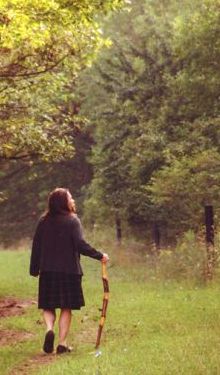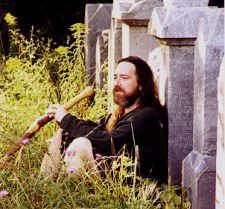 A Legacy of the Highland Clearances
The CD unfolds a true tale of tragedy and triumph chronicling the migration of 109 families from the Island of Lewis in Scotland's Outer Hebrides to the remote backwood's of nineteenth century Upper Canada. Victims of a kind of nineteenth century ethnic cleansing known as the Highland Clearances, the Lewis emigrants were evicted from their Hebridean crofts in 1851 by landowner James Matheson. The crofters were then transported overseas where they settled together in a block of farms in Bruce County, Ontario; maintaining their language and culture well into the twentieth century. The group has become known as the Lewis Settlers. The Silent Ones is especially close to Angus Macleod's heart as he is a direct descendant of these Gaelic pioneers. The CD was recorded at Macleod's own multi track recording facility located on a plot of land first settled by his great grandfather and namesake, Angus Macleod. Composing and recording the CD within the picturesque confines of Huron Township, the exact location of most of the events described in the Silent Ones, was a constant source of inspiration for Angus. 
"My wife and I can just step out our back door and walk along the little stream where my great grandparents strolled over a century ago and just two concessions over from our farm is the Lewis Cemetery, a site I have often frequented for inspiration." During the recording of the Silent Ones, Angus found himself taking long early morning walks to the 150 year old cemetery situated in a remote bushland section of Huron Township. Along the way he would pass the location of the settlers' first church which his great great grandfather helped to build in 1858. He would also go by the ashen grove where the Lewis Folk held open air Gaelic church services upon their arrival in the wilderness. "The first time that I visited the Lewis Cemetery I had this very definite feeling that I had been there before. It was almost like an early childhood memory. I asked my father about it and he assured me that I had never ever been there. I have since put it down to some kind of genetic recall." 
The CD was recorded between February 1998 and November 1999 with Macleod putting himself on a rigorous 14 hour a day, 7 day a week schedule. The Silent Ones meticulously combines state of the art keyboard and computer technology with traditional instruments like Highland Bagpipe, fiddle, whistle, mandolin and hammer dulcimer. Lead vocals are handled by 17 year old Kincardine native Sarah Buckingham. "Sarah's involvement in the CD came quite by accident", says Macleod. "Prior to recording the disc I put together a short list of vocalists who I had either worked with musically or hired during my 5 year stint as a Folk Festival Artistic Director. I was about to start auditioning when I heard Sarah sing at a concert I was recording for the town of Kincardine's Sesquicentennial. The minute Sarah started to sing a hush fell over the audience and the auditorium became completely still. She has that kind of voice - so clean and pure, its startling." The Silent Ones is unique in its use of narration and spoken word. The narration acts like a thread woven throughout the fabric of the piece tying the songs and instrumental music together. The spoken word, mostly in Gaelic, adds a mystical atmosphere to the CD. 
"I remember taking a break from recording one evening, stepping outside to catch a breath of night air. I had left the tape machine running and one of the Gaelic sections was drifting out the studio window; the ancient words of the text bouncing off the trees and floating across the fields down to the tiny stream at the back of our property. In a moment of enlightenment, I realized that these old words, now foreign to the area's residents, had not been spoken here since my great grandparents time. As the words echoed carelessly around my great grandfathers former homestead, I swear I could feel his spirit in the rustling of the trees and the gentle motion of the summer breeze." |
top of page
Main Page
 he Silent Ones is the fulfillment of a life long dream for composer Angus Macleod. Over three years in the making, The Silent Ones has taken Macleod on a personal odyssey of self discovery to Scotland's Isle of Lewis, the Eastern Townships of Quebec and finally to the main location of the story, Huron Township, Ontario.
he Silent Ones is the fulfillment of a life long dream for composer Angus Macleod. Over three years in the making, The Silent Ones has taken Macleod on a personal odyssey of self discovery to Scotland's Isle of Lewis, the Eastern Townships of Quebec and finally to the main location of the story, Huron Township, Ontario.